Zhewen Su
Multi-Scale User Behavior Network for Entire Space Multi-Task Learning
Aug 16, 2022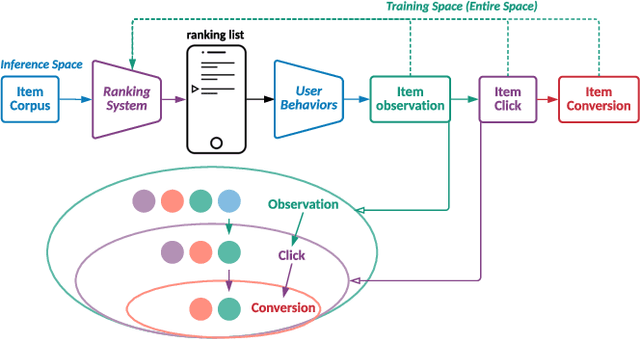


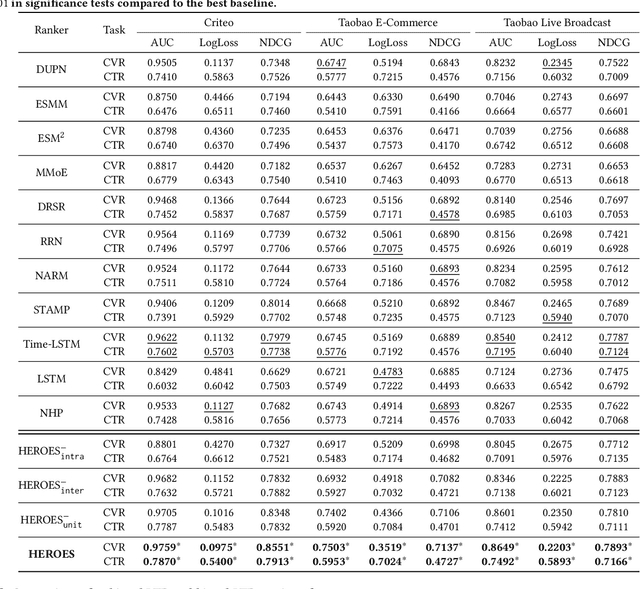
Abstract:Modelling the user's multiple behaviors is an essential part of modern e-commerce, whose widely adopted application is to jointly optimize click-through rate (CTR) and conversion rate (CVR) predictions. Most of existing methods overlook the effect of two key characteristics of the user's behaviors: for each item list, (i) contextual dependence refers to that the user's behaviors on any item are not purely determinated by the item itself but also are influenced by the user's previous behaviors (e.g., clicks, purchases) on other items in the same sequence; (ii) multiple time scales means that users are likely to click frequently but purchase periodically. To this end, we develop a new multi-scale user behavior network named Hierarchical rEcurrent Ranking On the Entire Space (HEROES) which incorporates the contextual information to estimate the user multiple behaviors in a multi-scale fashion. Concretely, we introduce a hierarchical framework, where the lower layer models the user's engagement behaviors while the upper layer estimates the user's satisfaction behaviors. The proposed architecture can automatically learn a suitable time scale for each layer to capture the dynamic user's behavioral patterns. Besides the architecture, we also introduce the Hawkes process to form a novel recurrent unit which can not only encode the items' features in the context but also formulate the excitation or discouragement from the user's previous behaviors. We further show that HEROES can be extended to build unbiased ranking systems through combinations with the survival analysis technique. Extensive experiments over three large-scale industrial datasets demonstrate the superiority of our model compared with the state-of-the-art methods.
Who to Watch Next: Two-side Interactive Networks for Live Broadcast Recommendation
Feb 09, 2022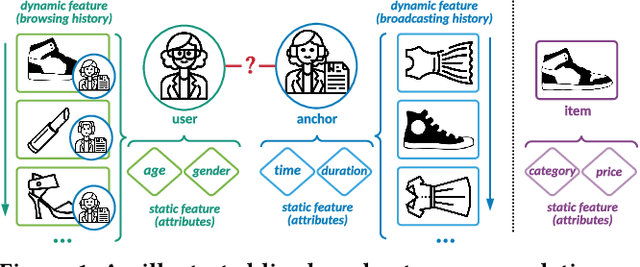
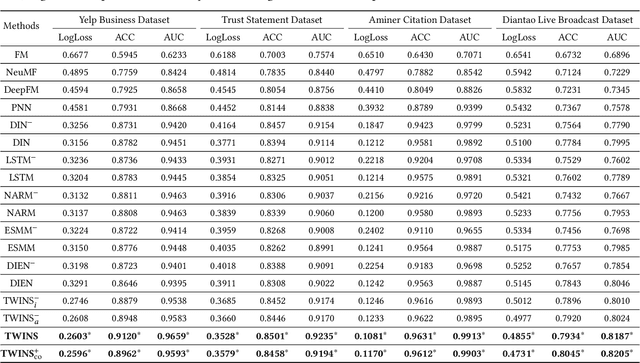
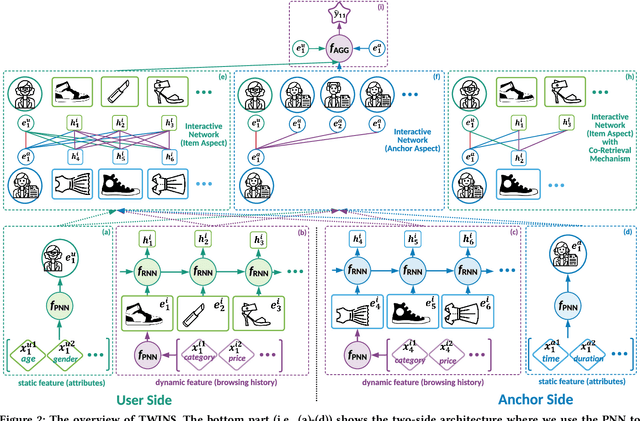

Abstract:With the prevalence of live broadcast business nowadays, a new type of recommendation service, called live broadcast recommendation, is widely used in many mobile e-commerce Apps. Different from classical item recommendation, live broadcast recommendation is to automatically recommend user anchors instead of items considering the interactions among triple-objects (i.e., users, anchors, items) rather than binary interactions between users and items. Existing methods based on binary objects, ranging from early matrix factorization to recently emerged deep learning, obtain objects' embeddings by mapping from pre-existing features. Directly applying these techniques would lead to limited performance, as they are failing to encode collaborative signals among triple-objects. In this paper, we propose a novel TWo-side Interactive NetworkS (TWINS) for live broadcast recommendation. In order to fully use both static and dynamic information on user and anchor sides, we combine a product-based neural network with a recurrent neural network to learn the embedding of each object. In addition, instead of directly measuring the similarity, TWINS effectively injects the collaborative effects into the embedding process in an explicit manner by modeling interactive patterns between the user's browsing history and the anchor's broadcast history in both item and anchor aspects. Furthermore, we design a novel co-retrieval technique to select key items among massive historic records efficiently. Offline experiments on real large-scale data show the superior performance of the proposed TWINS, compared to representative methods; and further results of online experiments on Diantao App show that TWINS gains average performance improvement of around 8% on ACTR metric, 3% on UCTR metric, 3.5% on UCVR metric.
 Add to Chrome
Add to Chrome Add to Firefox
Add to Firefox Add to Edge
Add to Edge